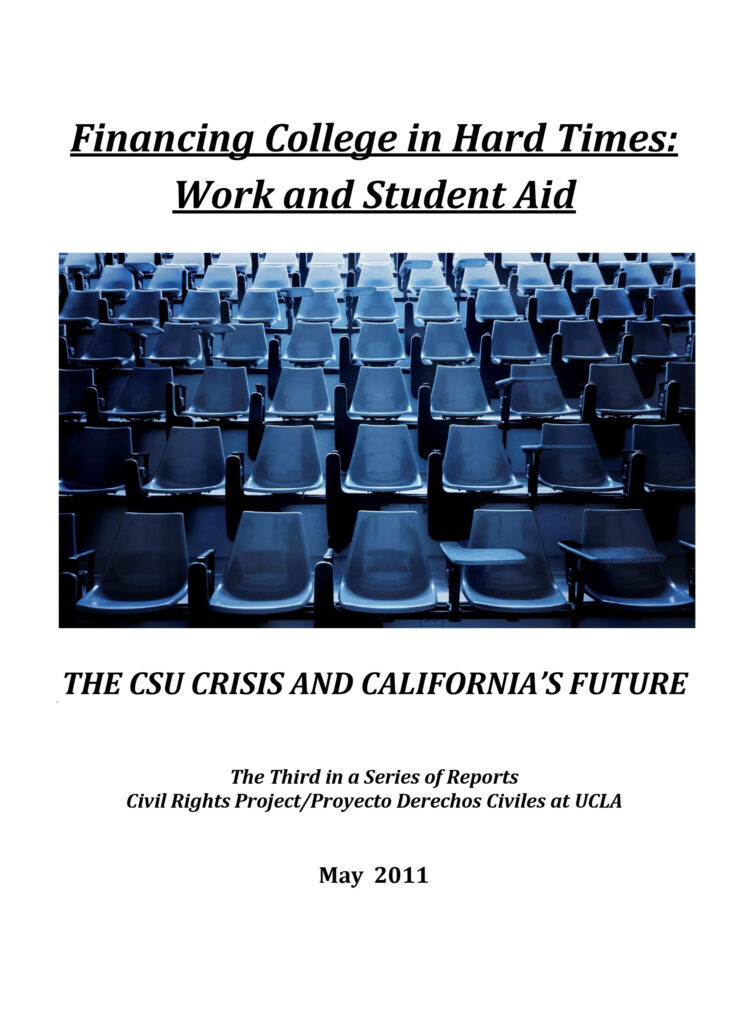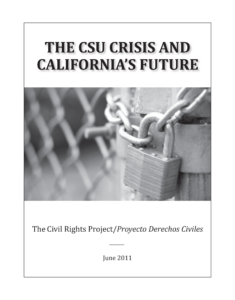These two reports constitute PART THREE of the series, designed to analyze the impact of the fiscal cutbacks on opportunity for higher education in the California State University system.
A. Higher Tuition, More Work, and Academic Harm: An Examination of the Impact of Tuition Hikes on the Employment Experiences of Under-represented Minority Students at One CSU Campus, by Amy Leisenring
This study explores the impact of recent budget cuts on Latino, African American and American Indian students, their views on tuition/fee increases and the effects of working in paid employment on their academic success. Leisenring’s analysis is based on survey data of 163 under-represented minority students (URM), as well as in-depth interviews with 16 URM students. The author finds that due to rising college costs and budget cuts, 86% of students surveyed in the study work for pay while in college, with under-represented minority students comprising a large majority of those students who work while in college; 36% reported working over 35 hours per week, while 60% of students report not being able to take the classes they need due to their work schedules. Two-thirds report taking longer to graduate due to work obligations. Across the board students are found to be working too many hours to keep up with their studies and a large proportion (30%) of those surveyed report they may abandon their studies and hopes of getting a college degree.
B. The State University Grant Program and its Effects on Underrepresented Students at the CSU, by Jose Luis Santos
This research explores the State University Grant Program (SUG), a form of financial aid, and its effects on under-represented students over a 20-year period. The study finds that students who did not qualify for state or federal financial aid have benefitted the most from SUG. However, the awards are not enough to keep up with tuition. As need grows and Cal Grant eligibility is tightened, the SUG plays an increasingly important role in helping students to enroll and stay I college. The study asserts that SUG should become a more targeted, need-based aid program to assist the most under-represented and neediest students. The report concludes by urging policymakers to increase state funding for the SUG program so that it can help those students with the greatest financial needs.
For a brief summary of each paper in the series or to download the complete manuscript, see The CSU Crisis and California’s Future: Paper Titles, Authors and Abstracts.
Read more about why we undertook these studies: THE CSU CRISIS AND CALIFORNIA’S FUTURE
In compliance with the UC Open Access Policy, this report has been made available on eScholarship:






